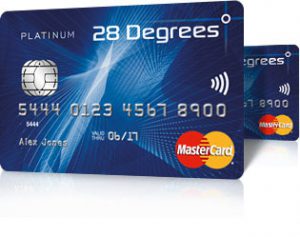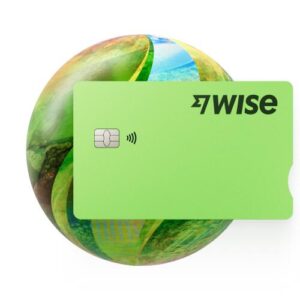Best Ways to Take Money to India in 2025
From frenetic cities to relaxed beach resorts, India has it all, with an enviable range of tourist attractions, fabulous cuisine and rich history. India is also a rapidly developing economy and a popular destination for Australians looking to further their careers in a growth market.
Whether you’re heading to India for a quick beach break or to live long term, you’ll need to figure out the best way to pay for things while you’re there. This guide covers 4 popular ways to take money to India, so you can pick the one that suits you best.
Best ways to take money to India
In this guide we’ll walk through 4 of the most practical and popular ways to take money to India, including our top picks for providers to look at, pros and cons. Here are the common ways to pay overseas that we’ll investigate:
Prepaid travel cards to use in India
Ideal for: topping up funds in AUD before spending and making ATM withdrawals in INR
Prepaid travel money cards usually come with linked digital multi-currency accounts you can fund in AUD before switching to INR (or a selection of other supported currencies) for spending and cash withdrawals. This has the advantage that you can lock in the exchange rate in advance, to set your travel budget.
Bear in mind that not all prepaid travel money cards support INR for holding. If you pick a card which doesn’t let you hold a balance in rupees you’ll still be able to use it overseas - just leave your money dollars for automatic conversions whenever you buy something or make a withdrawal.
If you choose a prepaid travel card with a good exchange rate and low fees you could cut the cost of your foreign currency spending. Prepaid cards also have the advantage that they’re not linked to your AUD bank account, which adds security when you’re travelling. If your card is stolen or misplaced, you can just freeze it, without impacting your normal bank account or card.
Learn more about our picks for the 6 best prepaid cards - there's more on our top choice, Wise, next.
Wise - our pick for prepaid travel card
With this card:
- Hold and exchange 40+ currencies in your linked Wise account
- No annual or monthly fees to pay, and no minimum balance requirement
- Currency exchange uses the mid-market rate with no markup
- Some free ATM withdrawals available every month
- Virtual and physical cards available
| Wise card pros | Wise card cons |
|---|---|
| ✅ Currency exchange uses the mid-market rate
✅ No foreign transaction fees apply ✅ Free to hold and spend 40+ currencies ✅ Receive payments to your Wise account in a selection of global currencies ✅ No minimum balance or ongoing fees |
❌ 10 AUD fee to get a card in the first place
❌ Free ATM withdrawals are limits to 2 per month, to the value of 350 AUD. Fees of 2% + 1.5 AUD after that ❌ Express delivery fees if you want to get your card as soon as possible |
Pros and cons of taking money to India with a prepaid travel card
Pros:
- If you pick a card which supports holding INR, you can convert funds in advance and lock in the exchange rate
- Safe to use, as your prepaid card isn’t linked to your main everyday account
- Cards are available with no minimum balance or ongoing fees to pay
- Currency exchange may have better rates than a bank will offer
- You’ll be able to re-use your card for your next trip - often dozens of currencies are supported
Cons:
- Not all cards support INR for advance exchange
- Exchange rates may include a markup on the mid-market rate
- ATM fees may apply, depending on the card you pick
- Some cards have inactivity fees which apply if you don’t use them regularly, or cash out fees if you close your account
Travel debit cards to use in India
Ideal for: spending and making cash withdrawals, with no interest or penalty fees
A travel debit card will work like any other debit card, but it isn’t linked to your bank account - adding security. Many also come with extra benefits such as complimentary wifi, insurance or airport lounge access, plus low or no foreign transaction fees.
Many travel debit cards are linked to a digital multi-currency account you can manage from your phone. That means it’s convenient to add money in AUD before you travel or when you’re away, and switch to INR in just a few taps.
We’ll go into more detail about our top pick for a travel debit card - Revolut - next, and you can also read more about the best travel debit cards in Australia here.
Revolut - our pick for travel debit card
With this card:
- Hold and exchange 25+ currencies
- Choose the account plan that suits your needs and spending, including some with no monthly fees
- Some no- fee ATM withdrawals and currency exchange with the mid-market rate, based on the account tier you choose
- Extra perks like accounts for under 18s, plus cash back on card spending for top tier account holders
- Travel benefits offered for some account plans
| Revolut card pros | Revolut card cons |
|---|---|
| ✅ Hold and exchange 25+ currencies
✅ Choose from different account tiers to suit different customer needs ✅ Get some no fee ATM withdrawals every month, depending on the plan you pick ✅ Get some currency exchange every month which uses the mid-market rate - limits vary by account plan ✅ No card order fee |
❌ Ongoing fees apply for some account tiers
❌ Out of hours fees push up currency exchange costs on the weekend ❌ ATM fees of 2% apply once you exhaust your no fee withdrawals |
Pros and cons of taking money to India with a travel debit card
Pros:
- Cards often have extra travel perks and low cost, or free, currency conversion
- ATM withdrawals are often cheap or even free
- Unlike credit cards, you won’t be charged interest on your spending
- Many cards from specialist services are linked to multi-currency accounts you can use on future trips too
- Secure as your card is not connected to your main AUD account, and can be frozen from the provider app
Cons:
- Some transaction fees usually apply
- You may pay a fee when converting from one currency to another, which may be split out transparently, but which is often just rolled up in the exchange rate you get
- Some cards have monthly fees to pay to get full feature access
Taking cash in India
Ideal for: day to day spending in markets, small stores and when you’re in more rural areas
Cash is very commonly used in India so carrying some rupees is essential. Even in large cities like Mumbai, some stores and restaurants prefer cash, and smaller places like markets and souvenir stalls won’t have any way of processing card payments either. If you’re heading off the beaten track you can expect cash to be the only payment method available in many places.
Converting dollars to rupees shouldn’t be too tricky. You can order INR online from a provider like Travelex and have it delivered to home before you travel, carry AUD to exchange on arrival, or make ATM withdrawals as and when you need rupees. Cities in India often have good ATM networks, which can make this a convenient and safe option for many people - particularly if you have a travel card which has no ATM fee to pay.
For most travellers, having several different ways to pay and access cash is reassuring, and means you’re unlikely to be caught out if a merchant can’t take one or other of your preferred payment methods.
| Cash pros | Cash cons |
|---|---|
| ✅ Major providers like Travelex sell INR you can get delivered to your home
✅ In many situations, cash will be the only accepted payment method ✅ Convert in advance so you know exactly what you have to spend ✅ Use travel debit cards to make cash withdrawals when you can, which often offer better rates than buying cash |
❌ Carrying a lot of cash isn't safe - tourists are often targeted by petty thieves
❌ You’ll have to invest time during your break or in advance, shopping round to get a good deal ❌ Exchange rates vary widely and usually include a markup - an extra fee |
Do I need cash in India?
Yes. Carrying some cash in INR is essential. In many situations, cash will be the only accepted payment method, particularly once you get away from major cities and very touristy areas.
How to buy INR on arrival in India?
Clean and undamaged Australian cash can be exchanged to INR on arrival in India. You’ll find plenty of currency exchange stores in cities and popular tourist areas, but fewer - or even none at all - once you get off the beaten track.
How to buy Indian rupees in India?
If you’d prefer to be organised in advance you can also choose to exchange AUD to Indian rupees in cash in Australia before you travel. Options like Travelex often let you order INR online and collect your cash later in a branch, or have it delivered to your home. Fees and exchange rate markups may apply.
Best place to get INR from
There’s no single best place to get your travel cash. For many travellers, carrying some INR and AUD in cash, and making some cash withdrawals as and when needed offers both security and convenience.
Travel credit cards to use in India
Ideal for: convenient and secure spending in cities and larger resort areas
As we’ve already mentioned, cards won’t always be accepted in some parts of India, or when you’re spending with smaller businesses. However, in major cities and large retail chains, you can usually use a card, including a travel credit card.
If you’re planning on using a credit card to pay your way during your trip, a travel credit card can be a good bet as you may pay low or no foreign transaction fees or earn extra reward points, cashback or miles when you spend in foreign currencies. However, as with any credit card, there will also be costs, which can include annual fees, interest and cash advance charges.
In particular, making an ATM withdrawal with a credit card can be very pricey because you’ll usually be charged a cash advance fee and interest which accrues instantly. It’s worth considering getting a travel debit card to use in ATMs, which can mean no fees and good exchange rates, and keeping your credit card for spending directly with merchants.
Learn about the best travel credit cards in Australia here, and read on for more on our top pick.
28 Degrees - our pick for travel credit card
With this card:
- Order online and start spending with your virtual card instantly if approved
- No annual or monthly fees
- No foreign transaction or currency conversion fees
- Make ATM withdrawals overseas - fees apply for this service
- Unlock perks like discounts on travel bookings and internet roaming packages

| 28 Degrees pros | 28 Degrees cons |
|---|---|
| ✅ No annual or monthly fees
✅ No foreign transaction fees - your payment is converted to AUD using the Mastercard exchange rate ✅ Repay your bill in full monthly to avoid interest or penalty fees ✅ Travel perks and partner discounts available |
❌ Cash advance fee of 3% or 4 AUD (whichever is greater), plus interest, when making an ATM withdrawal
❌ Interest charges apply if you don’t repay your bill in full monthly ❌ Subject to eligibility and credit checks |
Pros and cons of travel credit cards to India
Pros:
- Where they’re accepted, cards are a convenient and safe way to pay
- Earn rewards and discounts, or get travel perks - depending on the card you pick
- Some cards have low or no foreign transaction fees
- Credit cards are useful as a payment guarantee in some situations
Cons:
- Cards aren’t always accepted in India
- Interest and fees usually apply if you don’t pay back your bill immediately
- Cash advance fees and interest mean that using your card at an ATM is expensive
- Eligibility rules and credit checks apply
Travel requirements from Australia to India
You’ll need to apply for a visa to go to India. At the time of writing, Australian citizens are eligible to apply for an e-visa which means the whole process can be done online without needing to visit an embassy or consular office. Apply in good time so you have all your documents lined up before you travel.
Entry requirements can change rapidly, so checking before you travel is always advised. Check the government’s Smart Traveller website to learn more.
Does India accept Australian dollars?
No. You won’t be able to spend AUD anywhere in India. If you’re carrying dollars with you you'll need to exchange them for Indian rupees when you arrive.
Best currency to take to India
You’ll only be able to spend in Indian rupees in India, so you can choose to either carry AUD in cash with you and convert on arrival, or to order your travel cash in Indian rupees before you leave. Bear in mind that exchange offices will be hard to find in more remote areas.
How much money do I need per day in India?
India is a country of extremes - so you can really spend as much or as little as you like when you’re there. In the cities you’ll find some accommodation in central locations is pretty expensive, but there’s a good range to allow you to pick something to suit your budget. In other popular destinations like Goa, hotels are on the cheaper side - one of the reasons India is a big hit on the backpacker circuit.
The great news is that day to day life in India is often pretty cheap. To give a flavour, a 3 course lunch for 2 will set you back under 20 AUD on average, a cheap lunch for one will be around 4 dollars - and a domestic beer about 3 dollars.
Do some detailed research to see how much things are likely to cost based on your plans and where you’re headed, so you can set your budget. Get more detailed cost information by city, from Numbeo.com.
How much does it cost to fly from Australia to India?
Flight costs vary widely depending on where in Australia you’ll leave from and where you’ll visit in India. At the time of writing (September 2023), you can find flight deals in the range of 700 AUD to 800 AUD return. Bear in mind these flights will require a change which can make the overall travel time very long. Non-stop flights are available from some cities in Australia - but these are far more expensive.
Top travel money tips to India
Here are a few final tips to help your money go further while you’re away:
- Have several different payment methods in case one isn't accepted wherever you are
- Get a travel money card before you leave to make it easier and cheaper to spend and withdraw in India
- Always have some cash on you - you’ll need it in many stores and restaurants
- Avoid common travel money traps in India with this handy guide
Conclusion
Generally, whether you’re heading to India or anywhere else in the world, having a variety of ways to pay is definitely the smartest move. That’s certainly the case in India, as cards won’t always be accepted, so you’ll need a mix of cards and cash to get by conveniently.
Carrying lots of cash isn’t safe, so for most travellers, using a card to make ATM withdrawals in INR as and when you need to makes sense. You could also find this approach saves you money if you get a travel card - such as a prepaid travel card from Wise or a travel debit card from Revolut. Not only will you get a good exchange rate, many travel cards have some free ATM withdrawals overseas, for a great combination of cost and convenience.
Use this guide to decide which option to take money to India will work best for you, based on your own preferences and needs.
FAQs - Best ways to take money to India
Should I exchange money before I travel to India?
You’ll need to have some cash in India, so you can exchange in advance or make an ATM withdrawal on arrival at the airport. Using an ATM can also be cheaper than advance exchange, particularly if you have a travel card from a provider like Wise or Revolut.
Can I withdraw Indian rupees from a local ATM?
You can’t withdraw Indian rupees at an ATM in Australia, but you can use a travel card to make an ATM withdrawal on arrival in India. This is often one of the most convenient ways to arrange your travel cash for India.
Are prepaid travel cards a good way to take money to India?
Travel prepaid cards from services like Wise are a safe way to spend when abroad. With Wise you’ll also get mid-market exchange rates and low, transparent fees which can bring down the costs of your trip.
Can I use cash in India?
Yes. Cash is unavoidable as it’s the only payment method accepted by many smaller merchants. Carry some cash at all times, and make ATM withdrawals as and when you need to so you never run short.


